Imagine my surprise when I checked on my strawberry crops one summer, expecting to harvest the berries, only to find that something else had gotten there first.
Was it a pest, a bird, an animal? Something else? How would I know?
Never fear. You’ll learn what eats your strawberries (and what ate mine).
Table of Contents
What Is Eating My Strawberries?
The most common animals eating your strawberries are birds (American robin, scrub jay, and crow), mammals (dogs, deer, squirrels, rabbits, and moles), insects (snails and slugs, strawberry bud weevils, sap beetles, tarnished plant bugs, aphids, and more), and fungi (gray mold).
5 Culprits That Eat Your Strawberries
Here are five common categories of culprits that may be enjoying your juicy strawberries:
1. Birds
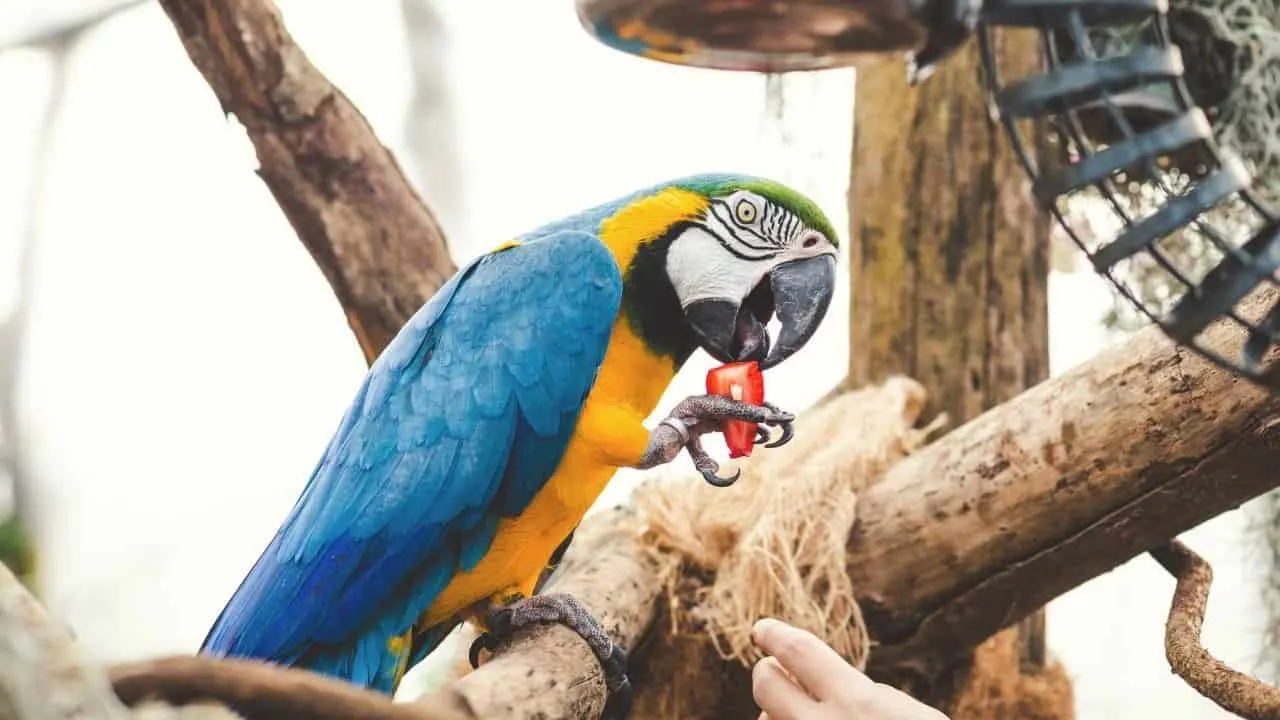
Birds eat strawberries, and they also use these plants as shelter.
If your strawberries grow quite densely (as mine did at a stage before I started transplanting the strawberry daughter plants or runners), birds will shelter under these to protect them from predators.
The feathered culprits that enjoy eating sweet strawberries are crows, blue jays, American robins, and scrub jays.
To protect my strawberries from these berry-eating birds, I’ve put up a few scarecrows and some netting.
2. Mammals
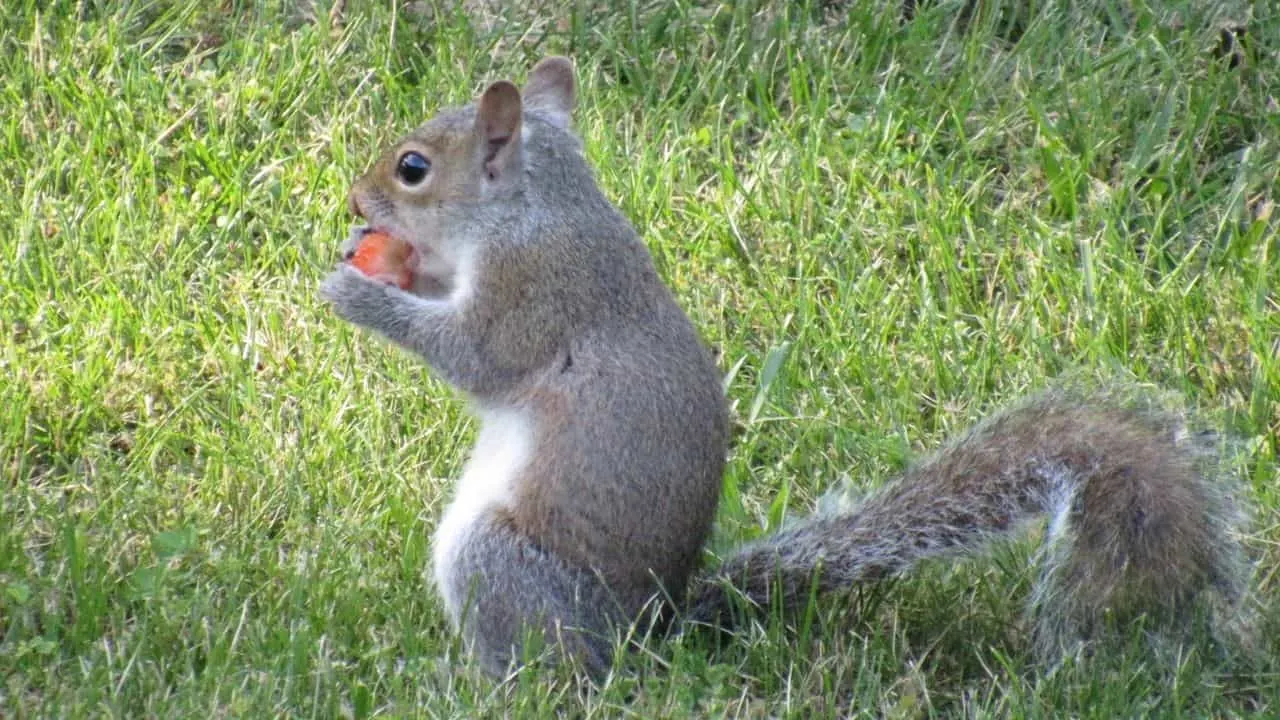
Your pets and other wild mammals in your area may be feasting on your yummy strawberries. The “wild” suspects could be bats, mice, moles, raccoons, squirrels, deer, rabbits, and skunks.
I have a lot of squirrels and the occasional deer that come to visit where I live. To protect my strawberry plants, I put up a fence around my crops to keep these animals out.
3. Snails and Slugs
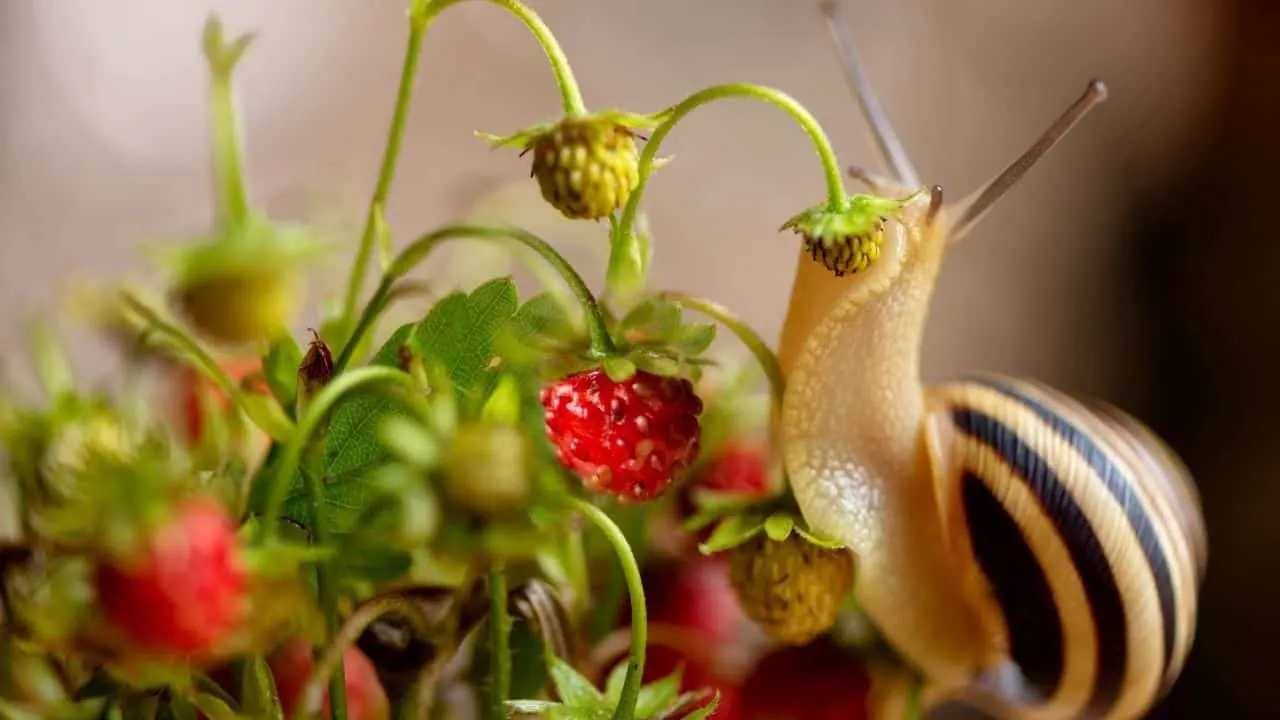
Something is eating your strawberries?
Slugs and snails could be the actual problem because both of these are known to be vicious strawberry destroyers!
And I mean vicious because they eat everything, from the ripened fruit and leaves to young plant bark.
When snails and slugs are eating my strawberries, they leave telltale signs.
There will be deep and small holes in the berries and silvery slime trails on the leaves and stems.
I’ve found that my slug problem was common when the weather was damp.
To protect my strawberries from these culprits, I make sure I regularly remove plant debris, thus eliminating places where these eaters hide.
I also transplant strawberry runners so my plants don’t grow densely, increasing humidity levels.
Alternatively, I recommend using a solution with ammonia and 9/10 parts water, and I spray this on my strawberry plants.
4. Fungi
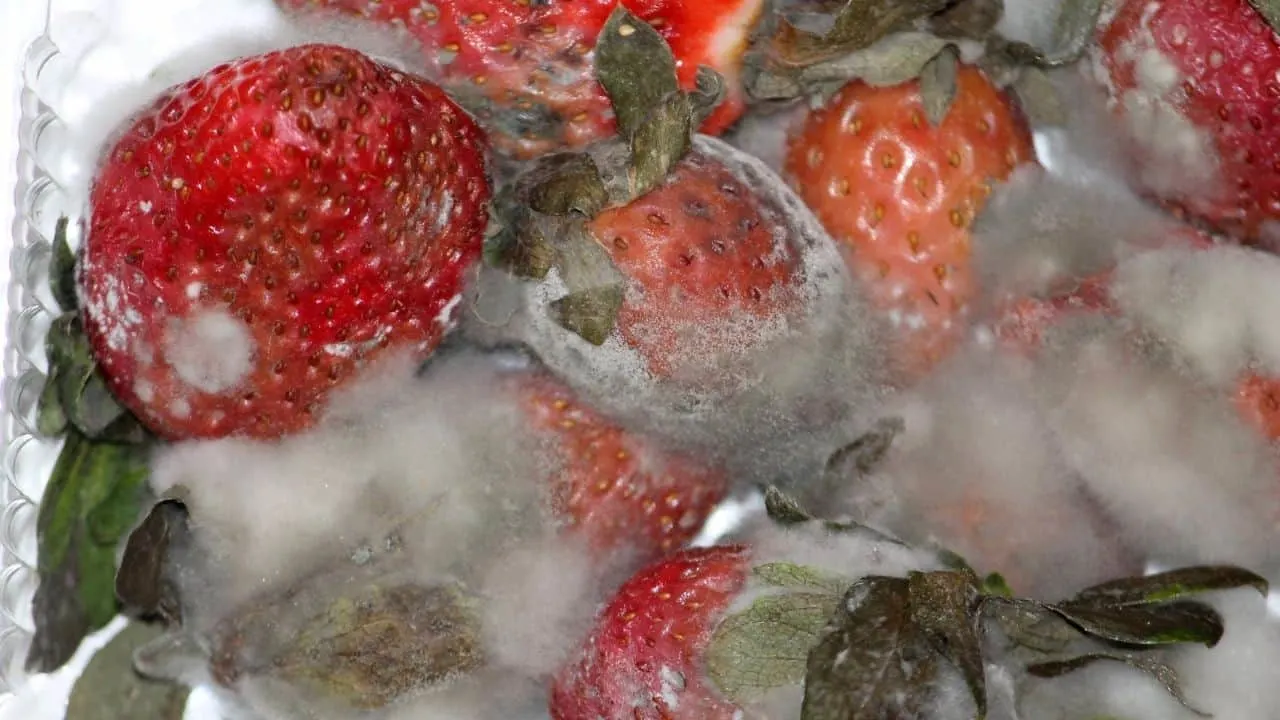
Gray mold is the most common fungus or mold that may be responsible for eating your strawberries. This disease eats rotting plant parts, especially those that don’t get sunlight.
To eliminate fungal diseases, I plant my strawberries in a raised bed and leave plenty of space between the plants.
I also water my strawberry plants during the day, or preferably early morning, so the leaves can dry a bit, decreasing the chances of fungi and mold taking root.
5. Insects
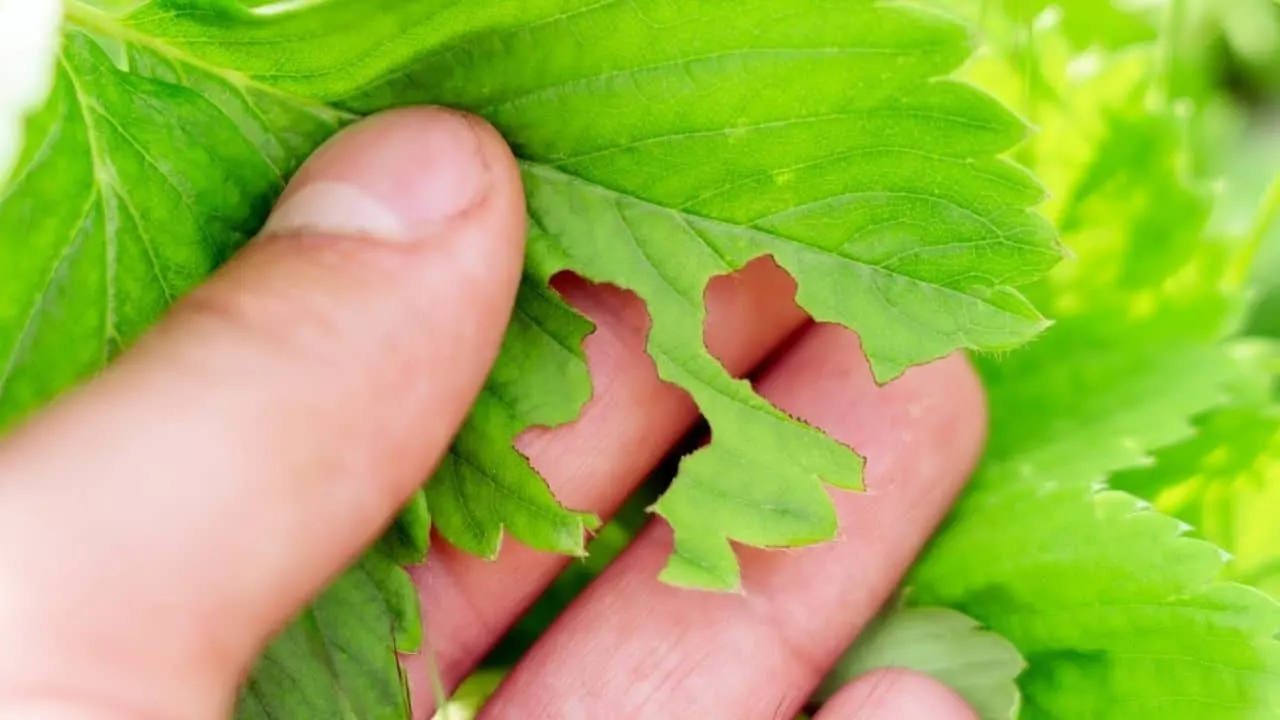
Various insects love eating strawberries. These strawberry destroyers include spittlebugs, mites, aphids, Lygus bugs, moths, strawberry bud weevils, also known as strawberry clippers, sap beetles, and tarnished plant bugs.
Worse than feeding on the berries, some of these insects also consume the strawberry plant leaves and secrete toxins that damage the plant.
These toxins stunt the growth of strawberries. You can use an insecticide; however, I prefer hand-picking and removing the infected leaves.
Since I regularly inspect my plants, I’ve been able to catch these infestations early on and act swiftly.
If spittlebugs are eating strawberries, I’ve found that they leave a bubbly foam at the base of the plants. The stems of my strawberry plants will also be punctured since these bugs like to feed on the juices of my plant.
To get rid of these insects (and tarnished plant bugs), I use homemade hot pepper or garlic spray. I’ve also used a citrus-based or neem oil insecticide.
In spring, tarnished plant bugs will lay eggs and then eat strawberries.
To help eliminate these pests, I remove all plant debris and weeds and use insecticidal soap if I spot these brown, green, or gray-winged insects on my strawberries.
Strawberry sap beetles eat nearly ripe, ripe, and decaying strawberries. They make holes in the fruit and only eat portions of the berries. While the holes are tiny, the strawberries rot.
To get rid of sap beetles, I like to place containers of overripe fruit or even stale beer away from my strawberry plants to attract these insects.
I also try my best to pick the strawberries as soon as they are ripe enough, and I ensure to remove any decaying fruit that lies on the ground.
Strawberry clippers are mostly a nuisance during early spring. They feed on the pollen and make little holes in the flower buds.
The female bud weevils lay eggs in the flower bud and close it to ensure the eggs are safe. This prevents the flower from becoming a strawberry.
To get rid of strawberry bud weevils, I spray insecticidal soap on my strawberries and I remove any limp flower buds or those that have fallen to the ground.
Frequently Asked Questions about What is Eating my Strawberries
How do you tell what is eating your strawberries?
To tell what is eating your strawberries, inspect the plants and look for telltale signs. If there are holes in the plants and traces of slime, then slugs or snails are eating your strawberries. If there are tiny holes in the fruit and it has started to rot, or your plants don’t grow as they should, then you have an insect infestation.
What animals are eating my strawberries?
There are a variety of animals that could be eating your strawberries. Common culprits are birds, like the American robin, crows, and blue jays, or mammals, like rabbits, raccoons, moles, and deer. Your dog may even sniff at a strawberry in your yard and sneak a taste.
How do I prevent animals and bugs from munching on my strawberries?
Firstly, to keep animals and bugs from eating your strawberries, find out what is feasting on your berries and plants. If birds are eating your strawberries, then you can put up a scarecrow. If a mammal is visiting your strawberries in search of a snack, then fence the area. If it is a fungus or insect, then use an insecticide, pick the berries as soon as they are ripe, and remove any debris.
The Last Strawberry
When you are not the only one enjoying the fruits of your labor (aka your yummy strawberries), you should investigate and find out what is getting to your berries before you are.
There is a range of strawberry-eating animals and insects, from raccoons, deer, squirrels, and birds to strawberry clippers, slugs, and snails, that could infect your plant and eat it.
Knowing what is eating your strawberries helps you take appropriate action so you are the only one feasting on the red berries.

Daniel has been a plant enthusiast for over 20 years. He owns hundreds of houseplants and prepares for the chili growing seasons yearly with great anticipation. His favorite plants are plant species in the Araceae family, such as Monstera, Philodendron, and Anthurium. He also loves gardening and is growing hot peppers, tomatoes, and many more vegetables.


